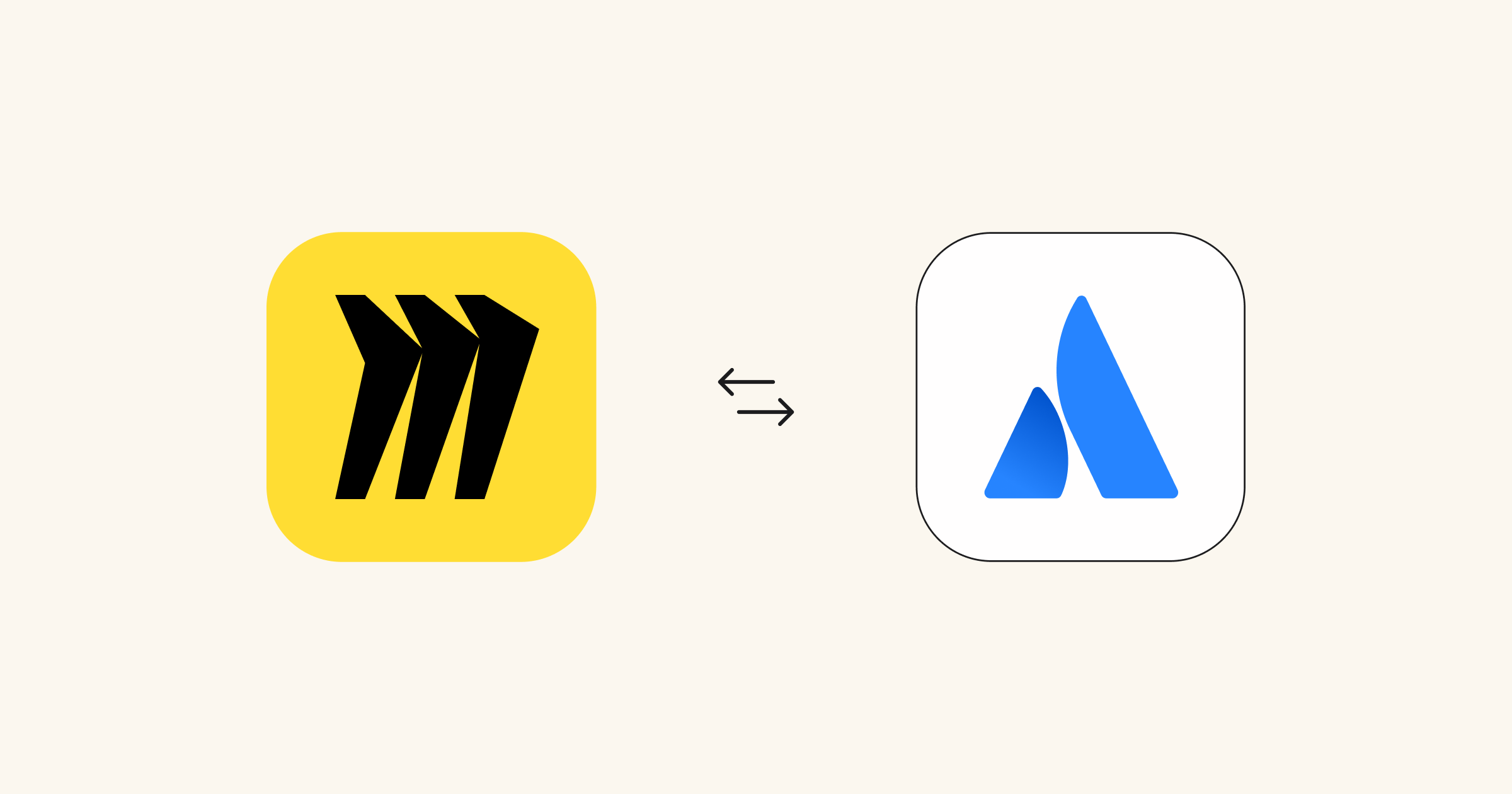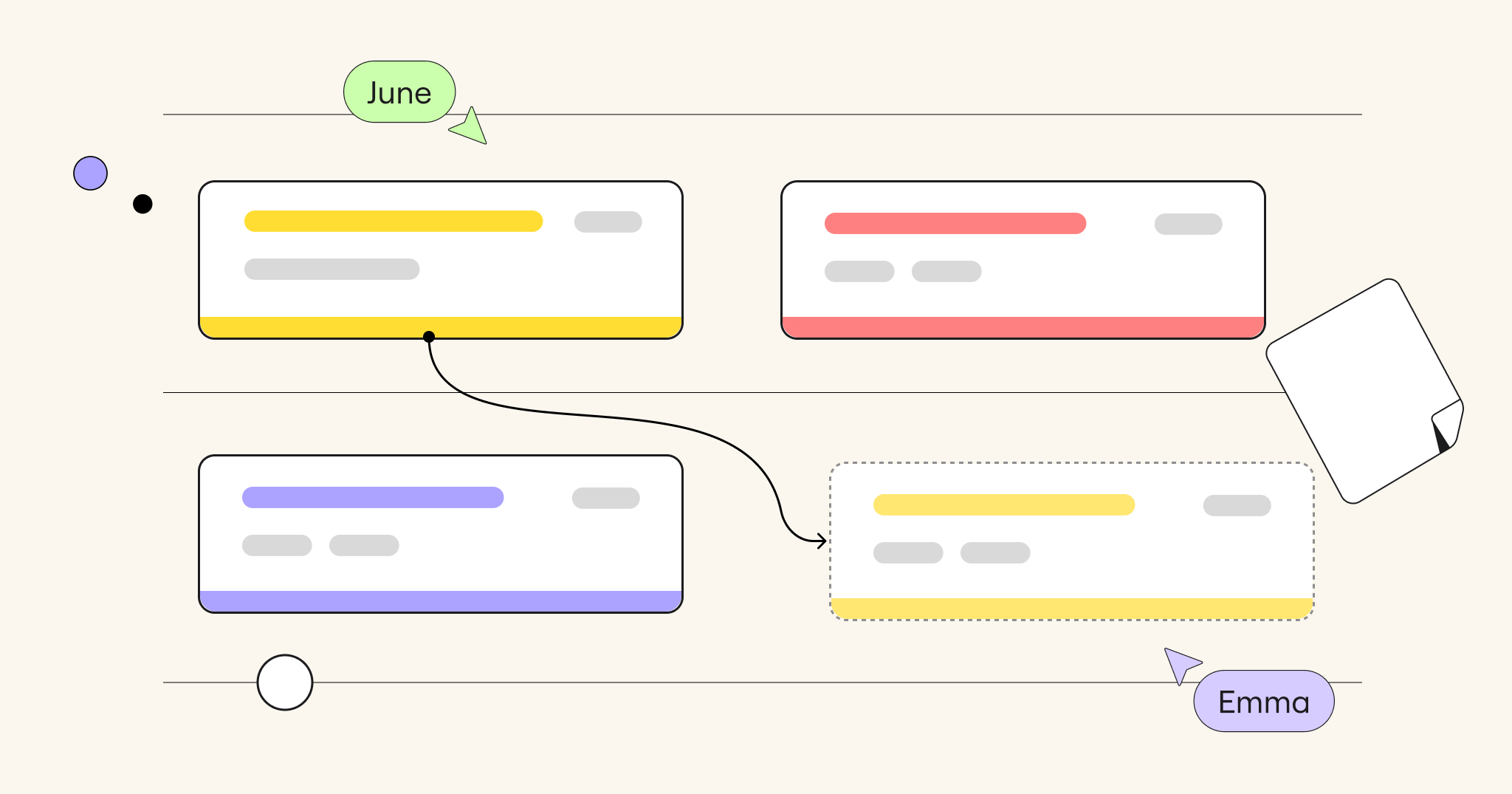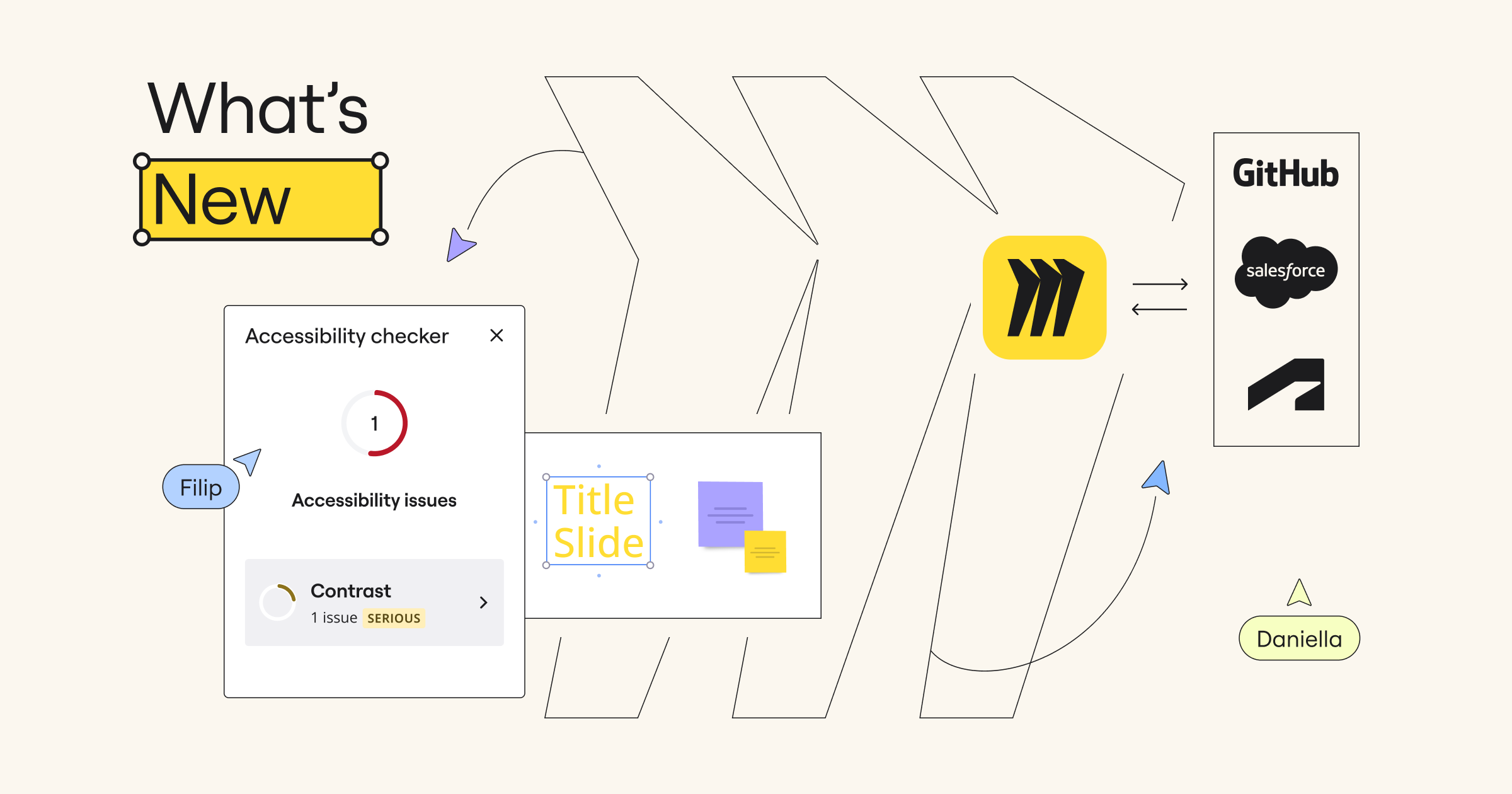The pandemic has forever altered ways of working for many, and organizations continue to adapt to this new normal. For product leaders, this means continuing to develop innovations at lightning speed while also navigating the needs of hybrid teams. Better yet, leaders need a clear understanding of the current hybrid landscape — including the top weaknesses and gaps in existing processes, and best ways to turn talk into action.
The good news? Miro is here to help. We recently brought together product leaders from Miro (Peter Parkes) and Atlassian (Bree Davies) to share their insights on current challenges that occur across Agile practice — and offered strategies to help build more collaborative, effective teams moving forward.
Unearth solutions to face current challenges head-on
The first step in solving any problem is to understand it. Leaders need to look closely at the challenges facing their teams and, as Bree notes, “they might not be the ones you expect.” Many hybrid teams grapple with how to best communicate and collaborate with geographically dispersed colleagues. This isn’t just important for the work itself; rather, collaboration and communication are necessary ingredients for a healthy team culture — and a leader’s actions can have a huge impact.
“Your style is critical,” explains Bree. “A supportive and consultative style is shown to be much more effective than an authoritarian one.”
Some strategies that have worked well for team leaders at Atlassian include: asking open-ended questions; maintaining and modeling boundaries; elevating diverse viewpoints; and facilitating open decision-making. It’s also helpful for team members when leaders are candid and vulnerable about their own struggles with hybrid work. Finally, encouraging skip-level one-on-ones helps nurture connections between team members in different roles and career stages, and builds cohesion and connectedness among individuals who might not work together closely.
“The good news is there is plenty you can do to build and support this kind of culture in your teams,” says Bree.
Atlassian’s team playbooks are one great tool to help teams better understand and meet today’s challenges. For example, she recommends the Work Life Impact play, which uses Miro boards to help participants learn to harness empathy and understanding amidst current challenges.
Identify overlooked gaps in agile rituals
Agile rituals can help hybrid teams come together to work more efficiently and effectively, but are your rituals as strong as they should be in this new work environment?
To tap into the human side of work, it’s important to focus on people and not just processes. Ask yourself if team members are connecting virtually in ways that are comparable to what they might have in the office — and, if not, it’s time to recalibrate.
“You might need to schedule more frequent one-on-one meetings because you can’t rely on hallway encounters or a quick coffee walk,” explains Bree.
She cautions leaders to be on the lookout for “bad apples,” which might be more common than you think: Atlassian research found that 26% of workers report having bad apples on their team and, even worse, 14% say that their manager is the bad apple. This can weaken psychological safety and collaboration, so it’s important for leaders to be aware.
“Make sure that your team members aren’t suffering in silence,” Bree cautions.
Today’s tools and technologies make it easier than ever for team members to participate — even when they aren’t in the same city or time zone.
“No matter your team members’ communication style or personality type, this is a huge game changer in the best possible way,” says Bree.
Understand the true value of free-form collaboration
For hybrid teams, collaboration often happens across time zones, at different times of day, and with workers in both the office and remote. As a result, Peter notes that synchronous time becomes a more valuable commodity — and one that’s challenging to nail down.
“It’s hard to find the moments when everyone can be together, whether in-person or virtually,” he explains. “You want to get as much out of that time as possible.”
In turn, this is a great time to rethink your team’s approach to communication. For a given project or check-in, ask yourself what is the best channel for the conversation and you’ll likely find that meetings aren’t always the answer. Often, a quick message or asynchronous collaboration is a better use of everyone’s time — and lets team members focus their energy on the work at hand, rather than getting burned out from endless meetings.
Democratizing communication on your team is another powerful way to maximize collaboration, and tools like Miro help level the playing field for contributing ideas and input.
“Some people are better at articulating ideas verbally, while others are better at sketching them out or adding sticky notes,” says Peter.
The key is to give a platform for diverse communication styles and preferences, rather than letting the loudest voices dominate. This isn’t just a more inclusive approach to leadership, it’s also a better way to drive creative solutions: “You hear more ideas, take more inputs, and listen to the people who are coming up with innovative solutions,” Peter explains.
Leaders can also increase the quality of debate on teams by encouraging people to provide both written and visual evidence for their views. This helps prevent teams from falling back on old ways and ensures that new ideas are carefully thought out and vetted. It also helps newer employees understand the “why” behind decisions.
Another trick to improving free-form collaboration? Iterate faster. For Peter, this means asking a key question: “What is the most minimal way we can make a decision and how can we arrive at a commitment without hours of discussion?”
Hours of meetings can get in the way of iteration but are still the default for many. Peter speculates that we might soon see a “generational shift in behavior,” in which meetings occupy less of our precious synchronous time, and tools like Miro fill the gap by creating a single space for both synchronous and asynchronous work.
Turn commitments into actions and outputs
One last trait of the most effective teams, hybrid or otherwise? They translate commitments into actions. This is easier said than done. We all know the familiar scene: you go to a meeting, have a great discussion, and get excited about the next steps. Then, the notes take too long to write up and things change in the interim, or the action items shared don’t match what was decided. This is when the trouble starts.
“If ideas or decisions get lost, this causes friction in the team,” explains Peter.
To stay ahead of the curve, Peter makes sure to record commitments instantly when in meetings to prevent future trouble. He finds that combining Miro and Atlassian helps eliminate that gap between the discussion and the next steps. For example, using the Jira integration for Miro boards enables him to transform stories and ideas in Miro sticky notes into instant action by adding the Jira card to the board. This way, everything his team needs is at their fingertips and in one place.
What’s more, this helps bridge the gap between synchronous and asynchronous work, ensuring everyone is on the same page — or board.
“What is awesome about this integration is that not only can you create actions and tasks directly from your workspace, but you can also get (and give) live updates,” says Peter.
Small tweaks to agile rituals can lead to big benefits
Hybrid teams face unique challenges in today’s dynamic landscape, but small changes to existing Agile rituals can make a world of difference.
By incorporating the strategies shared in this webinar, product leaders can better meet the needs of their own teams while also, in the long run, demonstrating the clear ROI of Agile practices when it comes to innovation.



